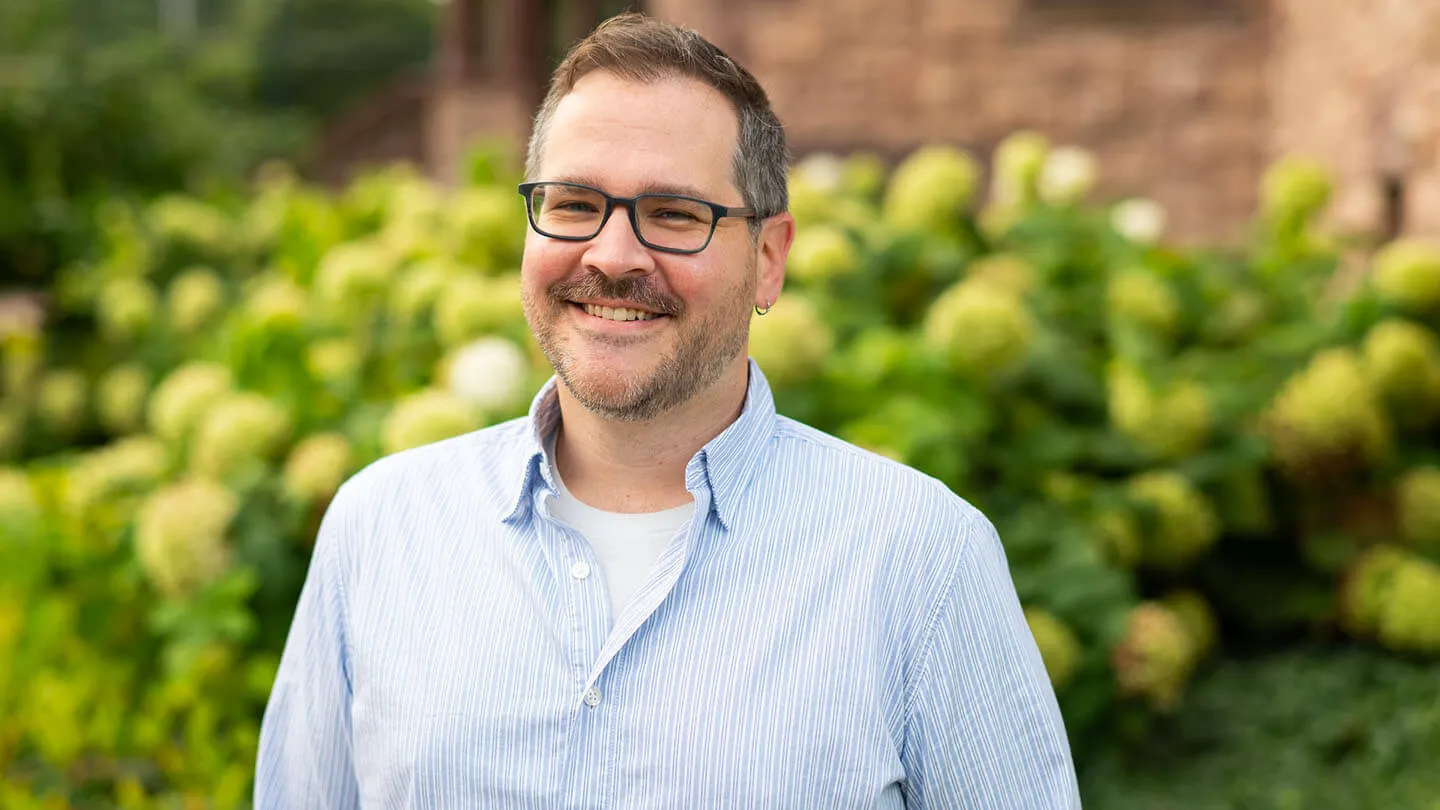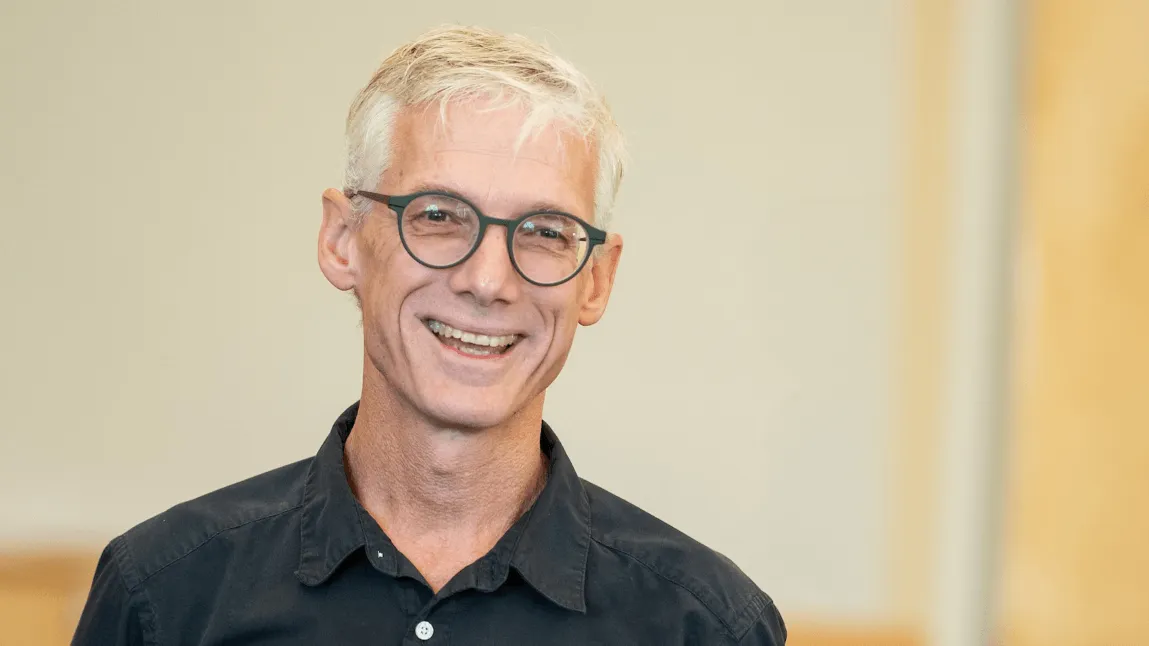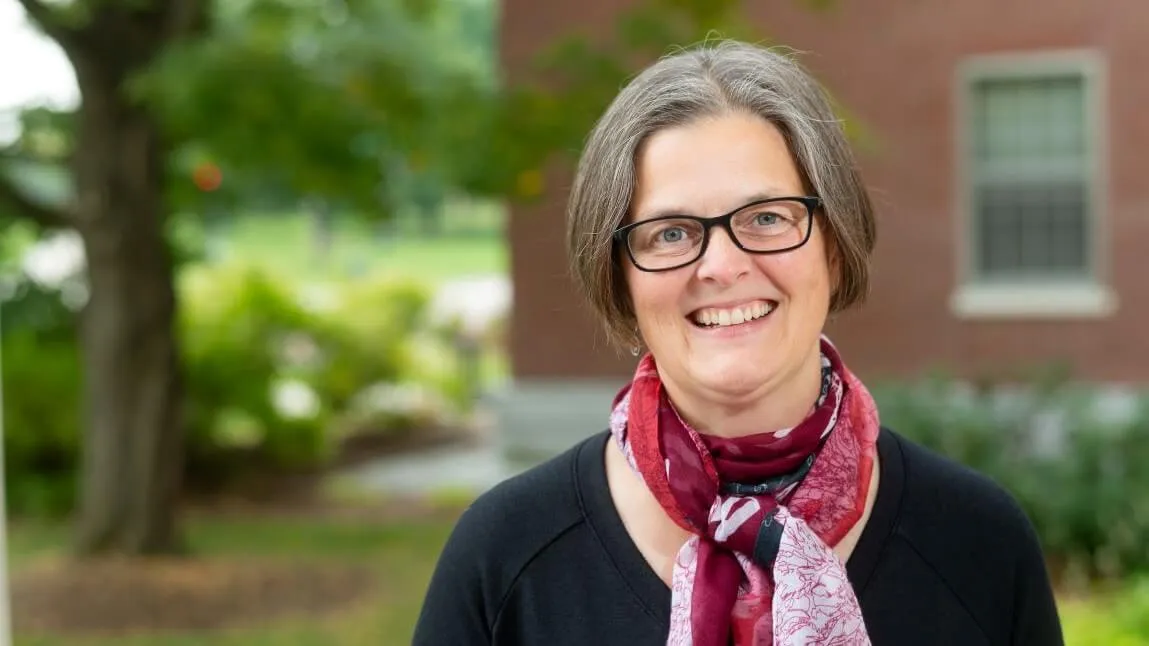Cody Silfies ‘09 does not want to be interviewed.
“Is this going to be the most painful thing in my life?” he asks with a pronounced wince. “Probably.”
Silfies is creative director for the University of Vermont’s Division of Strategic Communications, a position that touches almost every aspect of UVM’s digital and physical footprint. As a colleague noted in their nomination letter for him for the university’s Our Common Ground Awards, you may not know Cody Silfies, but you have definitely seen his work.
“I am a behind-the-scenes guy,” Silfies says.
If you work at UVM, look at your email signature. That’s Silfies. The UVM PowerPoint template used during scientific presentations? That’s him. The lamppost banners lining the University Greens—also Silfies. Have you read UVM’s alumni magazine? He designs that too.
Each year, UVM’s Our Common Ground awards recognize six staff members who embody UVM’s community values and have an outsized effect on the university. Silfies was recognized for demonstrating innovation, respect, and responsibility during his 13-year career at UVM.
Maddie White, assistant director of marketing for UVM’s Department of Student Life and Dudley H. Davis Center, first met Silfies when he was a graphic design student and candidate for a marketing and technology assistant position.
“He was just the person the department had been looking for,” White wrote in her nomination letter. “Creative, thoughtful, and deeply kind, Cody embodied the spirit of our Common Ground even then.”
We begin the interview where Silfies’ work-life began—in UVM’s Department of Student Life. He pokes his head around a corner to see if there is an empty conference room and immediately recognizes two faces and smiles. Silfies is clearly at ease here—the place that helped set the tone for his career—and sitting on his favorite couch at UVM
“Lots of memories,” he says.
Silfies worked under the now retired Student Life director Pat Brown—“an institution at UVM” (and former Our Common Ground winner)— who taught Silfies to set a big goal and work toward it. Under Brown, Silfies recalls, he felt he had the freedom to think big, the resources to try things, and a safety net to fail and learn from mistakes, Silfies says. “It really felt like you could do anything,” he says. He also credits Kate Strotmeyer, UVM’s senior director for cancer communications, constituent relations, and outreach, for teaching him how to think strategically and get the right people in the room to bring a project to life.
“My hope is that I do that,” Silfies says.
Paradoxically, he is still learning not to try to do everything himself.
“Professional challenge: to let go,” Silfies says, laughing.
He is driven by a desire for improvement from systems to finding the perfect font for a feature story. Silfies constantly wonders: ‘How do we connect the dots without creating more work? How do we cut through the noise?’ He seems to abide by a simple life rule: make it better.
“I feel very fulfilled in my role when I can take something and make it marginally better—easier to use, more functional, more impactful,” Silfies explains. “That fills my sails.”
And he leaves a mark everywhere he goes on campus. Silfies helped create an award-winning admissions campaign that sent prospective students cardboard virtual reality smartphone viewers that allowed them to give themselves a campus tour.
Some of his favorite projects don’t even exist anymore. In the early days of COVID-19, information about who could and could not be on campus was changing based on a person’s risk level and location, Silfies explains. He and a colleague developed an interactive quarantine tool to integrate with the university’s web platform that visitors could fill out and learn about pandemic-related impacts.
“It seems so simple right now,” Silfies says. “But the state noticed it and reached out [to post the tool to their websites] … I love taking a communication problem and using technology to make it better for everyone.”
Another typical Cody Silfies project: an annual affirmation project no one outside his team sees. Someone else in the Division of Strategic Communications pitched the idea of sharing notes of appreciation about coworkers once a year, but the model required one person to compile, format, and organize the information. Silfies simplified the effort by customizing a tool that emailed the notes to recipients just before Thanksgiving. This is his expertise in action.
“Someone had an idea, and I had an idea that could improve the experience for everyone,” Silfies says. “It’s also connected to the meaning. I think the appreciation project is important. It’s not intended for anyone outside the office, but it’s important to the people that we send it out to.”
In theory, Silfies could probably make more money in the private sector. But he stays at UVM because of the mission and the people. ““Some of my greatest, deepest, relationships I’ve built over my adult life were formed by UVM,” he says. “The people are the engine that drives all the creativity we do.”



